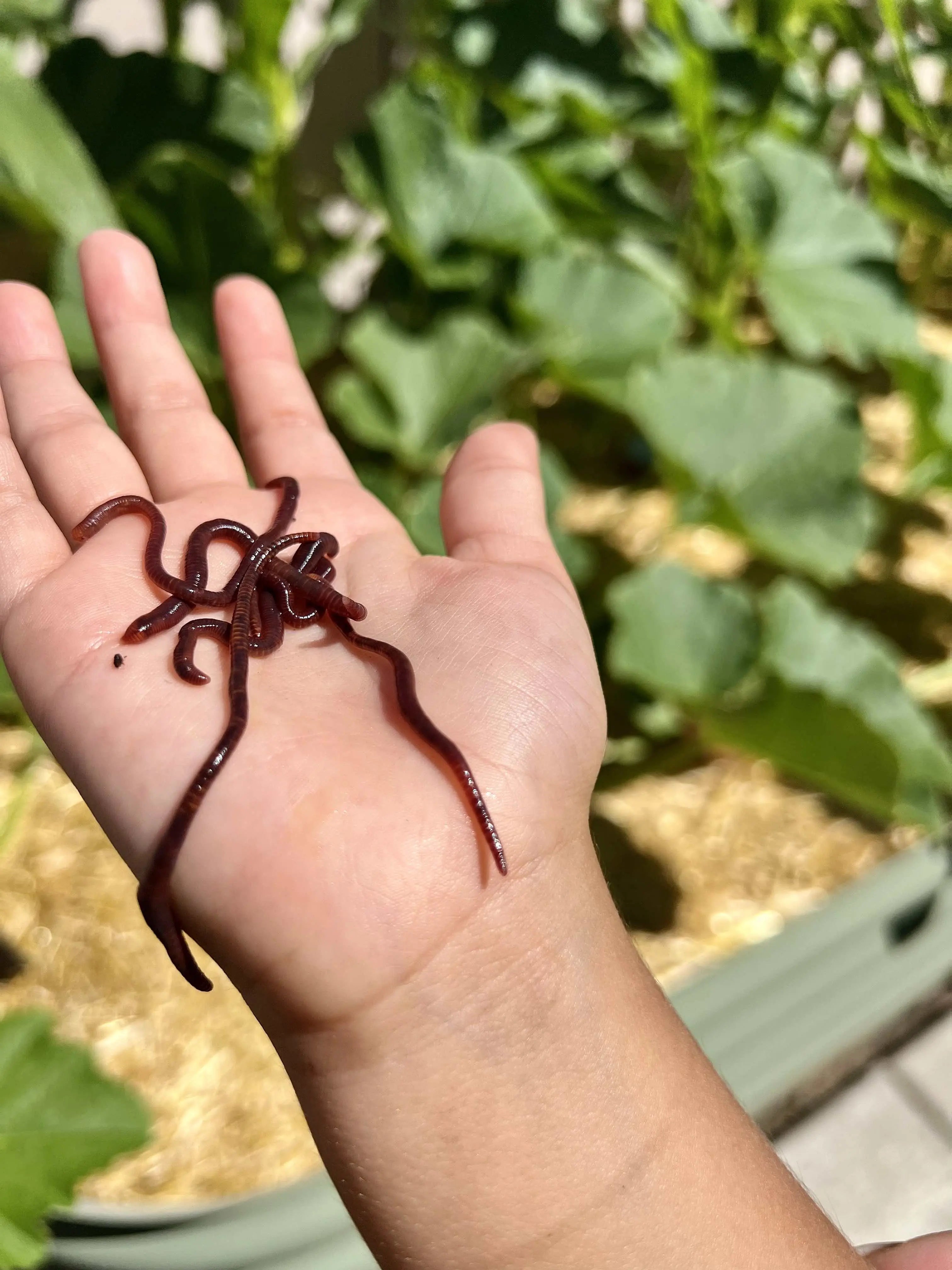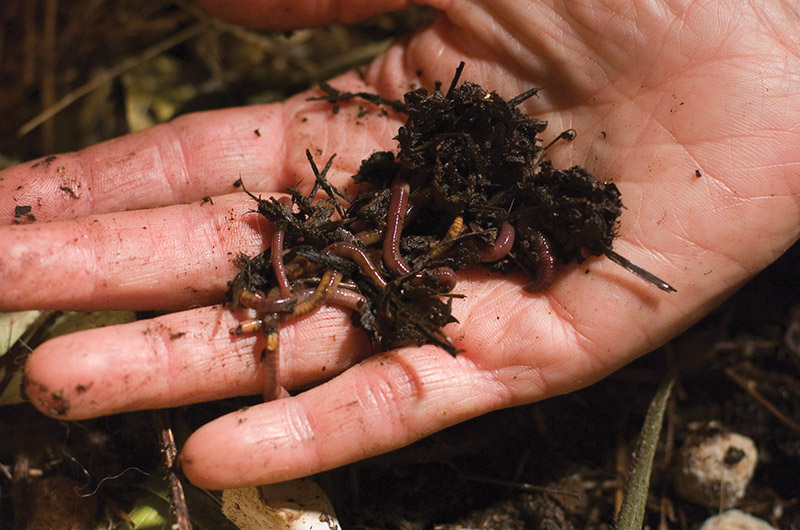Red Wiggler Worms - All-natural Remedy for Environmentally Friendly Composting
Red Wiggler Worms - All-natural Remedy for Environmentally Friendly Composting
Blog Article
Making The Most Of the Advantages of Red Wiggler Worms: A Comprehensive Manual for Home Gardeners and Urban Farmers
In the realm of sustainable horticulture methods, red wiggler worms stand as unsung heroes, silently transforming natural waste right into nutrient-rich castings that can function wonders for soil health and wellness. As home garden enthusiasts and metropolitan farmers increasingly look for cost-effective and ecologically pleasant methods to improve their yards, the possible benefits of taking advantage of the power of red wigglers can not be overstated. From lessening cooking area waste to cultivating much healthier plants, the application of these humble creatures uses a huge selection of benefits. By discovering the complexities of exactly how to successfully look after and optimize the advantages of red wiggler worms, people can open a wide range of opportunities for improving the sustainability and productivity of their gardening ventures.
Recognizing Red Wiggler Worms
Red Wiggler worms, renowned for their reliable composting capabilities, are a species of earthworms extensively used in vermiculture techniques. These worms, clinically called Eisenia fetida, grow in rotting organic material, making them ideal prospects for composting (Red Wiggler Worms). Red Wigglers are starved eaters, efficient in consuming their own weight in natural waste daily. Their gastrointestinal procedure breaks down organic matter right into nutrient-rich castings, which are a beneficial resource for enhancing soil and promoting plant growth.
One trick feature of Red Wiggler worms is their reproductive price. These hermaphroditic animals have both women and male reproductive organs, allowing them to reproduce rapidly under beneficial conditions. A mature Red Wiggler can produce multiple offspring in a short period, guaranteeing a stable population within a composting system.

Establishing a Worm Bin
When developing a worm container for vermiculture purposes, appropriate prep work and focus to detail are necessary for developing a conducive atmosphere for Red Wiggler worms. Begin by choosing an ideal container for your worm container. This can be a plastic or wood container with a cover to maintain moisture levels and secure the worms from light. Ensure that the bin has drainage holes at the base to avoid waterlogging.

Place the worm container in a great, dark place away from direct sunshine and severe temperature levels. Frequently keep track of the moisture degrees, including water if the bed linen really feels completely dry or flaky. Feed the worms a balanced diet of fruit and veggie scraps, preventing citrus fruits, onions, and spicy my latest blog post foods. By following these actions, you can set up a thriving worm container that will effectively process natural waste into nutrient-rich vermicompost for your garden.
Feeding and Maintaining Worms
Making certain a balanced and nutritious diet is important for the health and wellness and performance of Red Wiggler worms in a vermiculture system. It is vital to stay clear of feeding them citrus fruits, onions, garlic, milk items, meat, and oily foods as these can be hazardous to the worms or cause unpleasant odors in the bin.
Correct dampness levels are also crucial for the health of Red Wiggler worms. By faithfully checking their diet plan, wetness, and environmental conditions, home garden enthusiasts and urban farmers can sustain a healthy and effective Red Wiggler worm population for composting purposes.
Collecting Worm Spreadings
To effectively extract nutrient-rich worm castings from the vermicompost, a systematic harvesting procedure is necessary for making the most of the composting advantages. Red Wiggler Worms. The primary step in gathering worm spreadings is to motivate the worms to move to one side of the container. This can be accomplished by positioning fresh food scraps on one side and leaving the other side uninterrupted for a few days. As soon as most of worms have actually relocated to the side with fresh food, the castings can be gathered from the contrary side.
After the spreadings have been collected, it is necessary to divide any continuing to be worms from the castings to avoid hurting them throughout storage space or application. One effective method is to develop conical piles of spreadings under brilliant light. Worms will naturally relocate away from the light, enabling for very easy splitting up and removal.
Lastly, the gathered worm spreadings must be kept in a great, dark, and completely dry place to maintain their quality and efficiency as a nutrient-rich soil change. By complying with these actions, home garden enthusiasts and city farmers can make the most of the benefits of red wiggler worms in their vermicomposting systems.
Using Worm Castings in Gardening
The consolidation of nutrient-rich worm spreadings right into garden soil can substantially improve plant development and general soil health and wellness. Worm castings, likewise called vermicast, are a natural fertilizer produced by red wiggler worms as they damage down raw material. These spreadings are rich in necessary nutrients like nitrogen, phosphorus, potassium, and valuable germs that advertise plant growth and improve soil framework.
When making use of worm spreadings in horticulture, it navigate to these guys is important to mix them completely into the dirt or utilize them as a top dressing around plants. The slow-release nature of worm spreadings makes sure a constant supply of nutrients to plants over time, reducing the threat of nutrient leaching and advertising long-lasting soil fertility. Additionally, worm spreadings assist improve soil oygenation, water retention, and microbial activity, creating a healthy and balanced setting for plant origins to flourish.

Final Thought
In final thought, the application of red wiggler worms in home gardening and city farming can substantially profit dirt wellness and plant development. By understanding how to set up and maintain a worm container, feed the worms correctly, and gather their nutrient-rich castings, gardeners can make best use of the benefits of these earthworms.
In the realm of sustainable gardening practices, red wiggler worms stand as unsung heroes, quietly transforming organic waste right into nutrient-rich spreadings that can work wonders for dirt health and wellness.When developing a worm bin for vermiculture functions, correct prep work and interest to information are necessary for creating a conducive setting for Red Wiggler worms. The first action page in gathering worm castings is to encourage the worms to move to one side of the container. Worm castings, also recognized as vermicast, are an all-natural fertilizer produced by red wiggler worms as they damage down organic matter. By recognizing exactly how to set up and preserve a worm bin, feed the worms correctly, and harvest their nutrient-rich spreadings, gardeners can make best use of the advantages of these earthworms.
Report this page